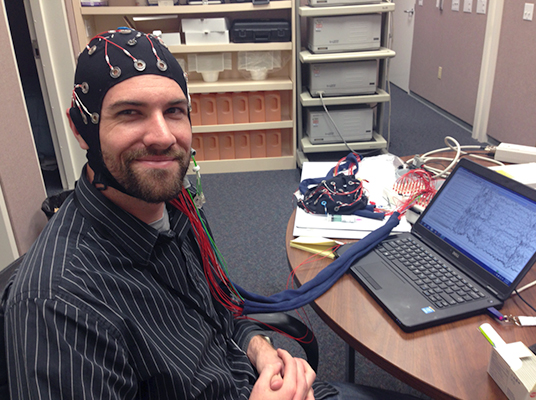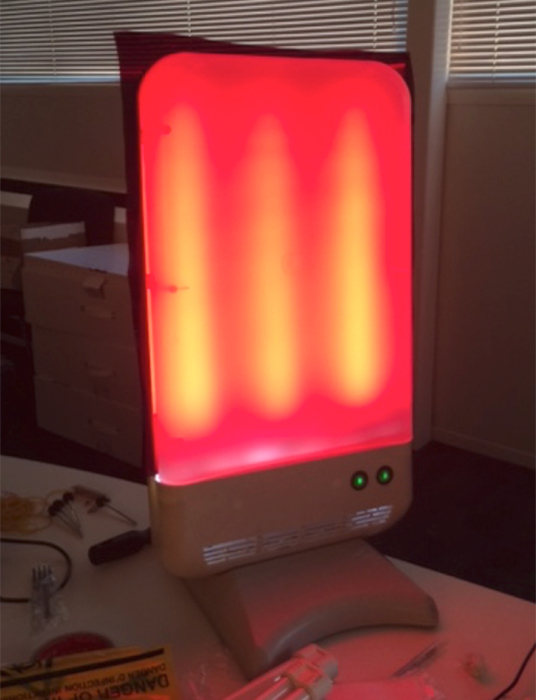|
|
 |

|
 |
 |
What is important in fatigue research?
Fatigue:
Fatigue is a general term that is often confusing and may refer to both physical and mental capabilities. We define fatigue as sleepiness arising from circadian desynchrony (being out of sync with one's internal clock), acute sleep loss (insufficient sleep over a short period of time), chronic sleep loss (insufficient sleep over a long period of time), and sleep inertia (grogginess following sleep).
Circadian Rhythm:
Circadian rhythm is the body's internal clock (set to roughly 24 hours), which regulates physiological processes. Jet lag is an example of being out of sync with one's circadian rhythm.
Sleep Stages:
Sleep is comprised of multiple distinct sleep stages. Stages 1 and 2 are light sleep stages. Slow wave sleep (also known as stages 3 and 4) is deep sleep, meaning that it is harder to arouse from sleep in response to external stimuli. Rapid Eye Movement (REM) sleep is often referred to as 'paradoxical sleep', as it is characterized by high levels of brain activity not dissimilar from wakefulness. Unlike during waking, during REM sleep the body is paralyzed, with movement only occurring in the upper facial muscles.
Melatonin:
Melatonin is a naturally occurring hormone that is produced in conjunction with the biological night. It is often measured in research studies as an indicator of an individual's circadian phase. When taken orally, melatonin does not induce sleep. Melatonin is a chronobiotic, which shifts the timing of the circadian rhythm.
A sample of the tools that we use to collect data in our studies
Actigraphy:
Activity monitors are simple wrist-worn devices that allow us to tell when a person is likely to be asleep and likely to be awake. These devices typically measure activity levels through the use of accelerometers. Our laboratory typically uses activity monitors that measure light exposure in addition to activity. The light exposure data is useful in helping us estimate circadian phase.
Psychomotor Vigilance Task (PVT):
The Psychomotor Vigilance Task is a commonly used test in sleep and circadian research. The PVT is a simple reaction time based test that is used to measure alertness. The Fatigue Countermeasures Lab developed their very own PVT+ tool which is available through the Apple App Store.
Electroencephalogram (EEG):
Electroencephalograms measure brain activity through electrodes placed on the scalp. EEG can be used to detect differences in levels of arousal and relaxation in addition to differentiating specific sleep stages in a sleeping individual. The EEG is the gold-standard measure for sleep.
Light Spectrometer:
Light spectrometers are used to distinguish different bands or wavelengths of light. They can inform us how much red, green, or blue light is present in an environment, in addition to the intensity of the light (measured in lux).
Eye Tracking:
Eye trackers can be used in a variety of ways, but generally speaking are used as a measure of visual attention.
Bio-specimens:
We collect hormonal data from individuals through urine, saliva or blood samples. The bio-specimen data that we collect can be used to assess circadian phase. For example, the timing of the peak of melatonin coincides with the circadian nadir. At this time, performance is lowest and sleepiness is highest. By measuring hormones such as melatonin, we can determine whether an individual's circadian rhythm is misaligned.
Some images of the tools used in our Lab.

Lab member Zac Caddick assists in configuring an EEG device.

An example of one of the experimental lights that will be deployed in the crew room.
|
|
|